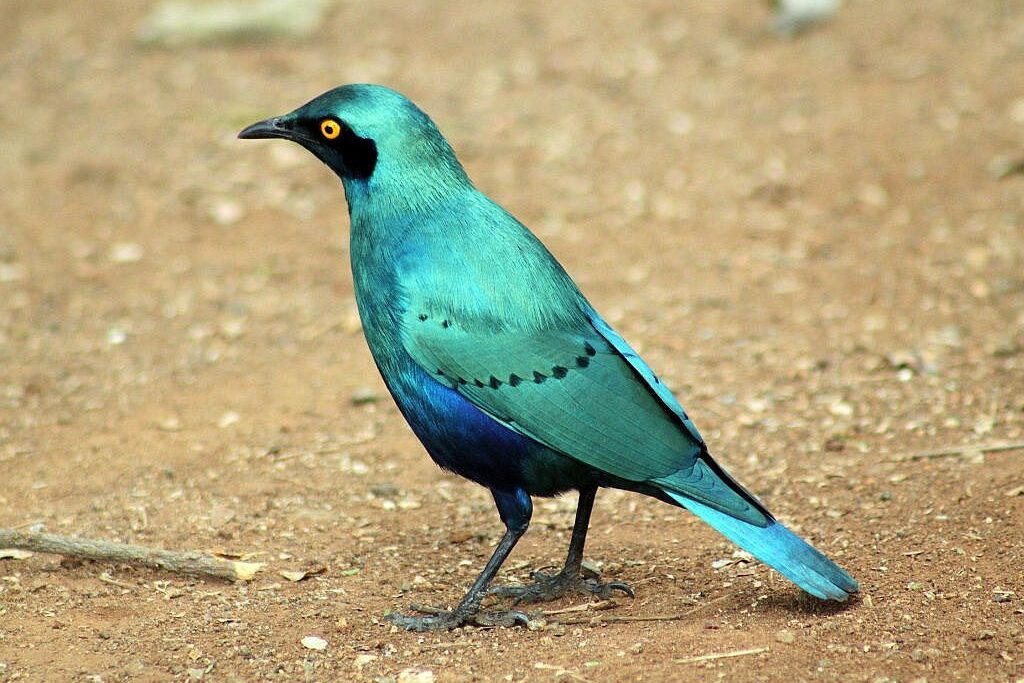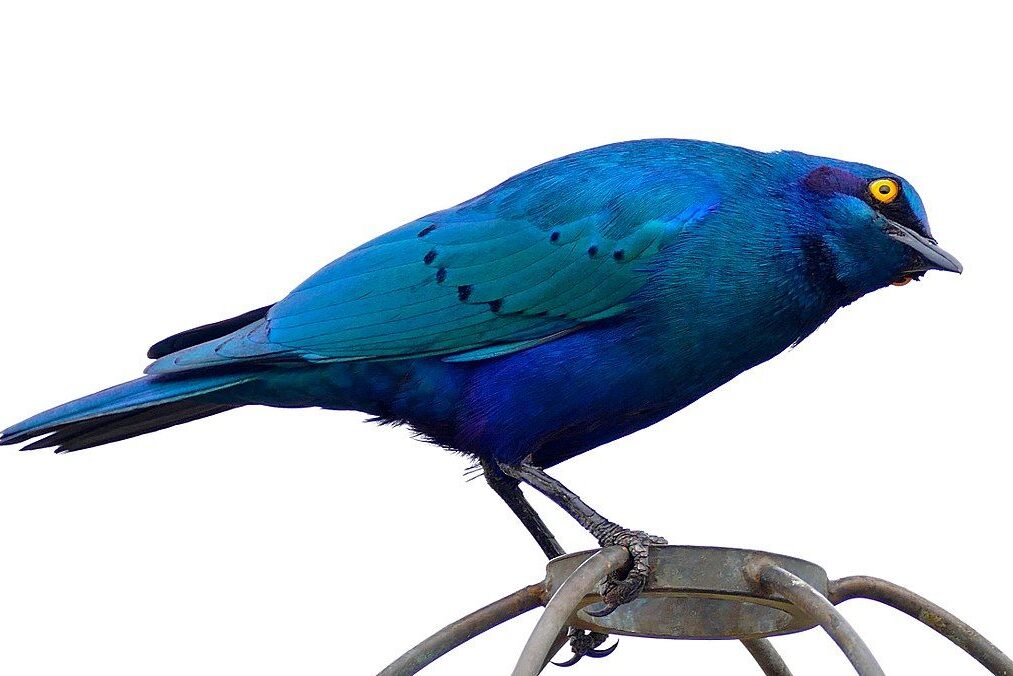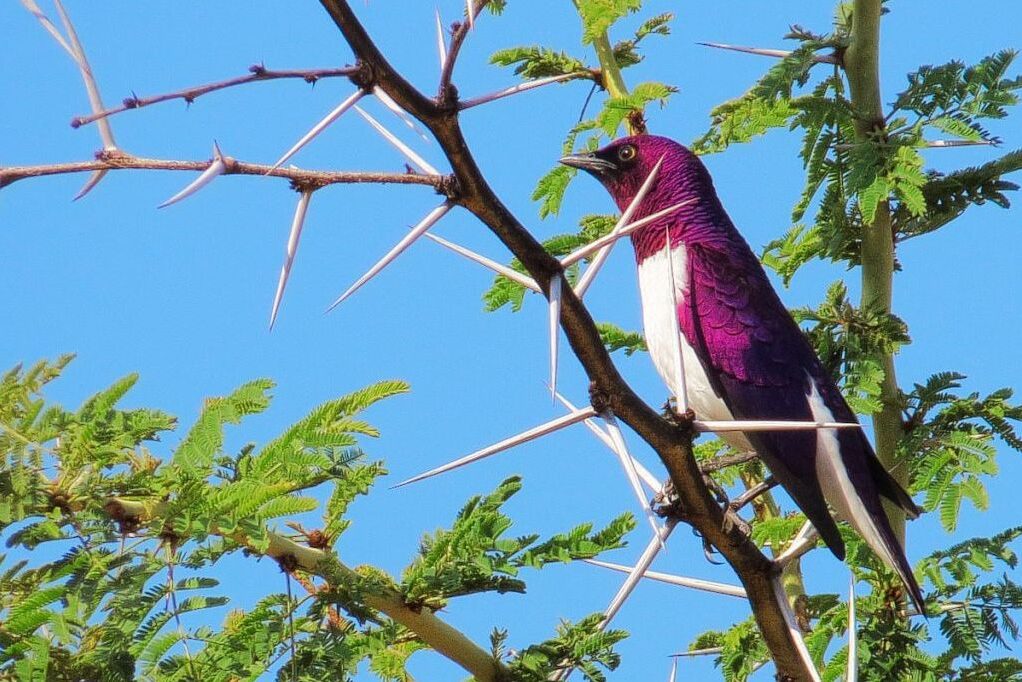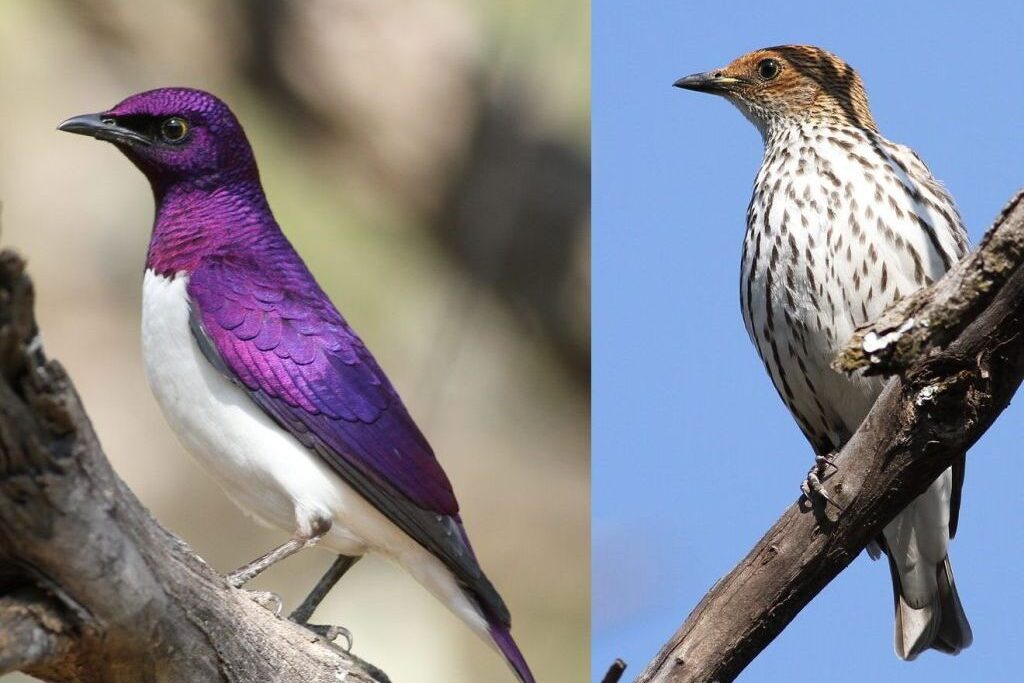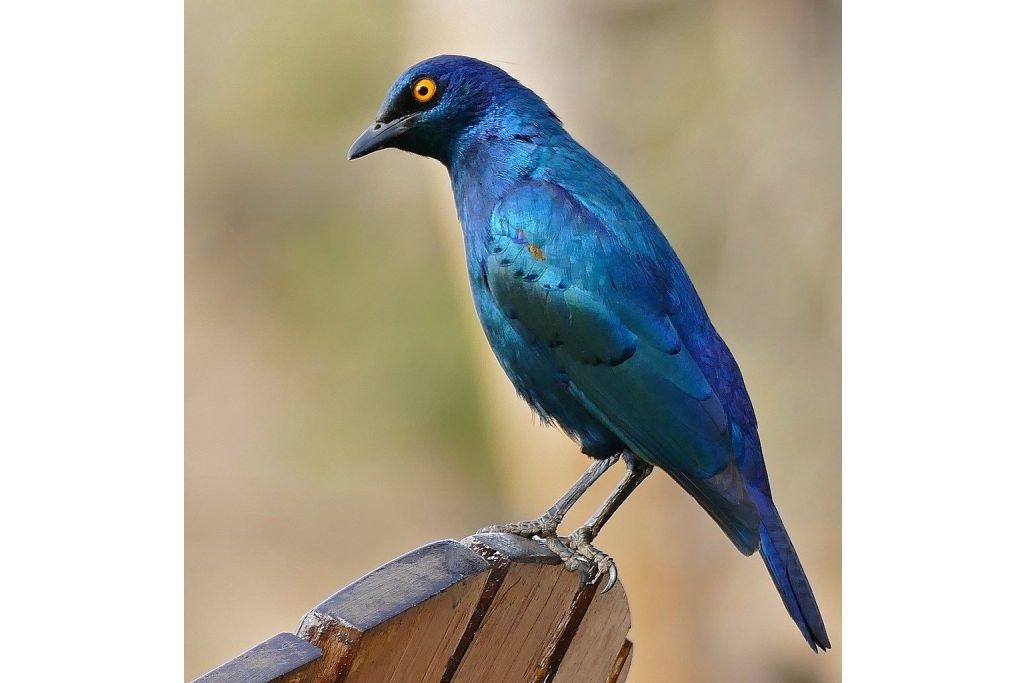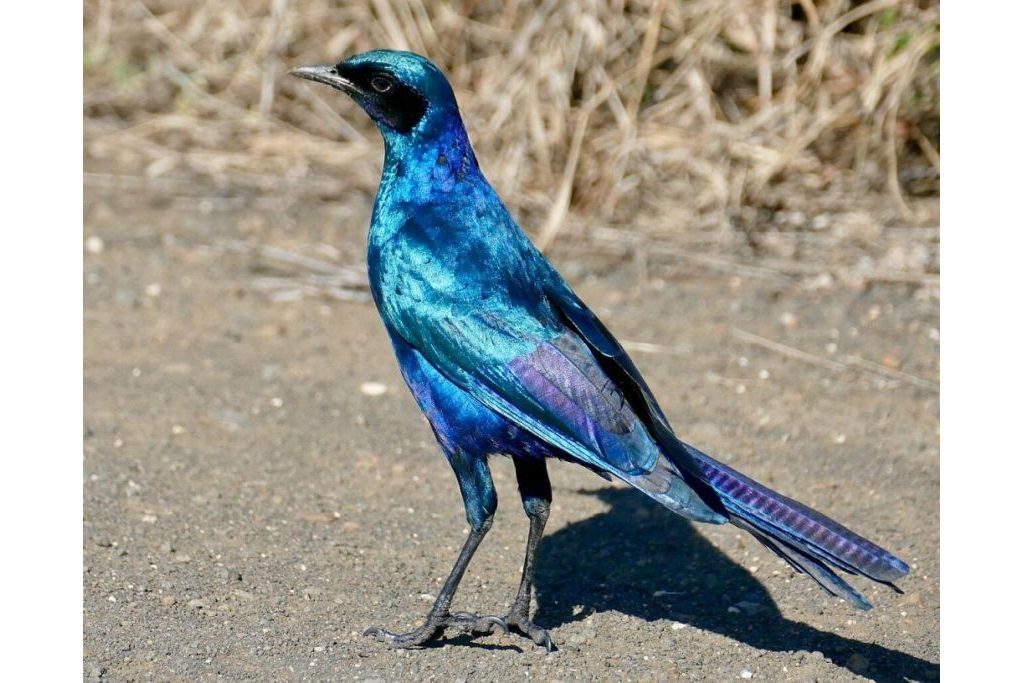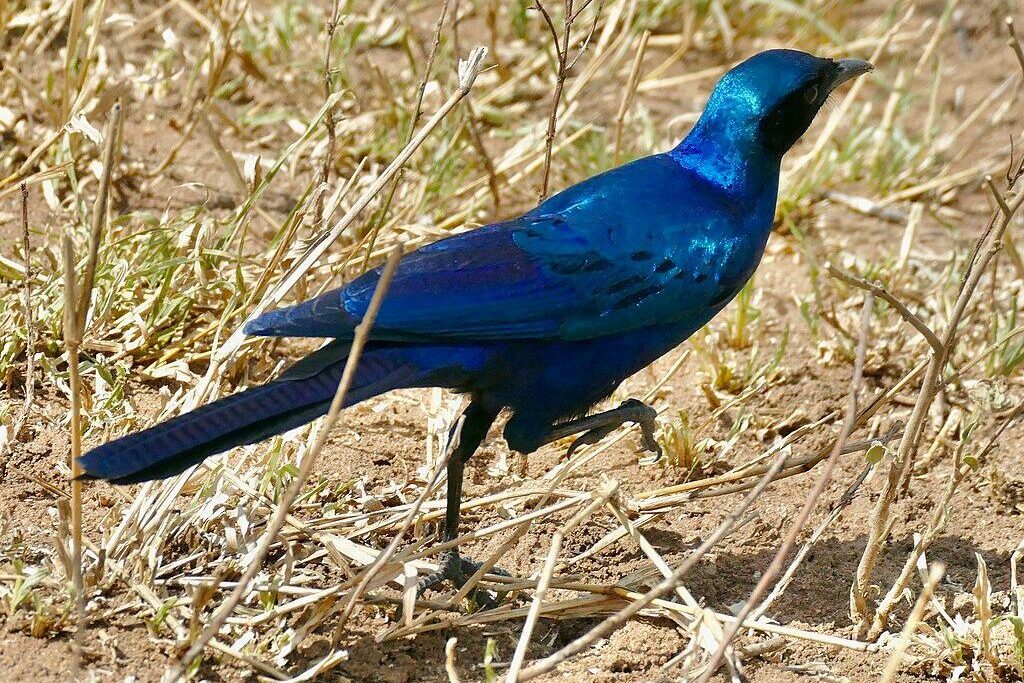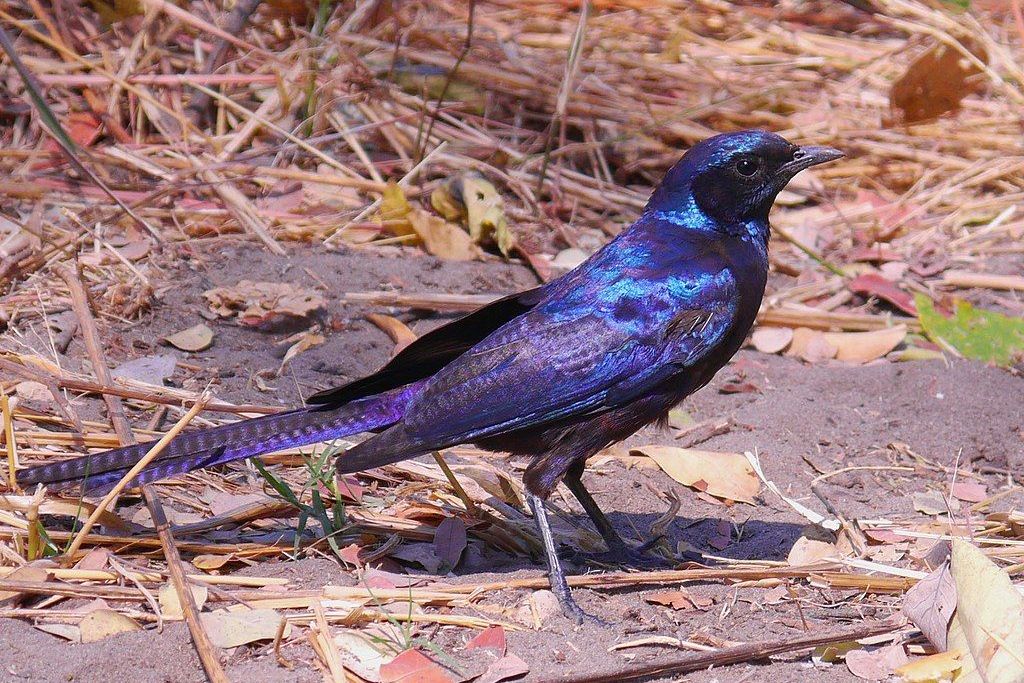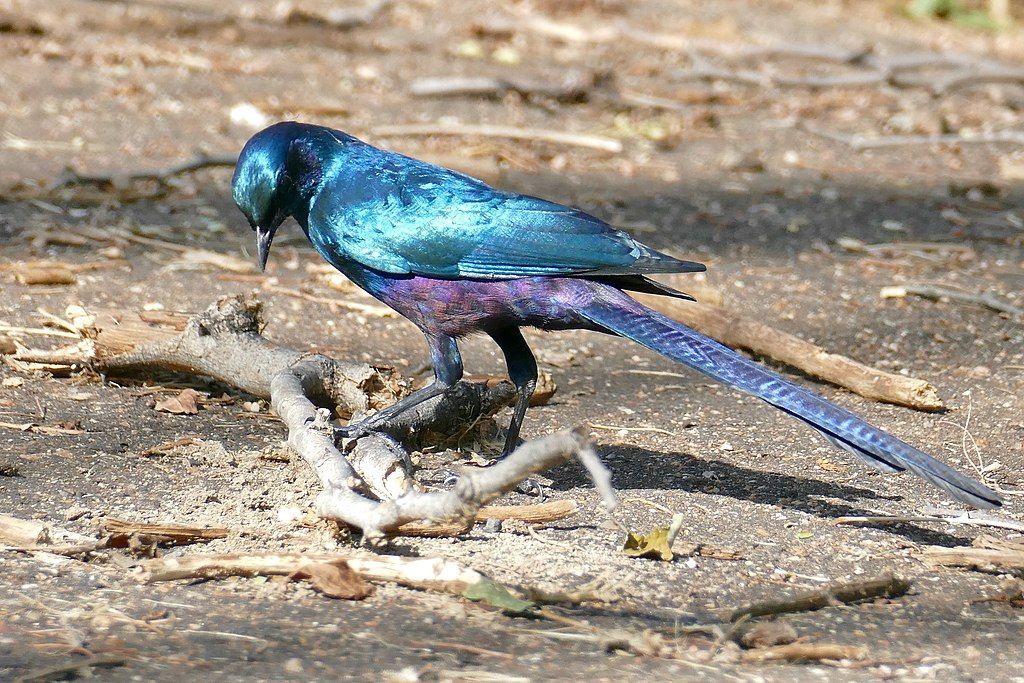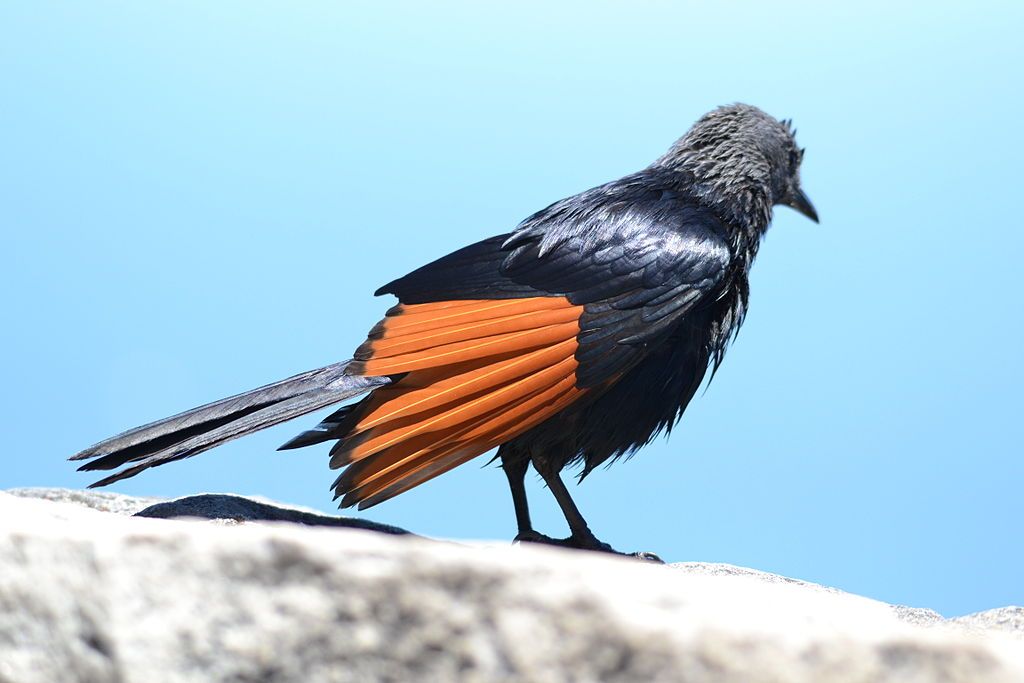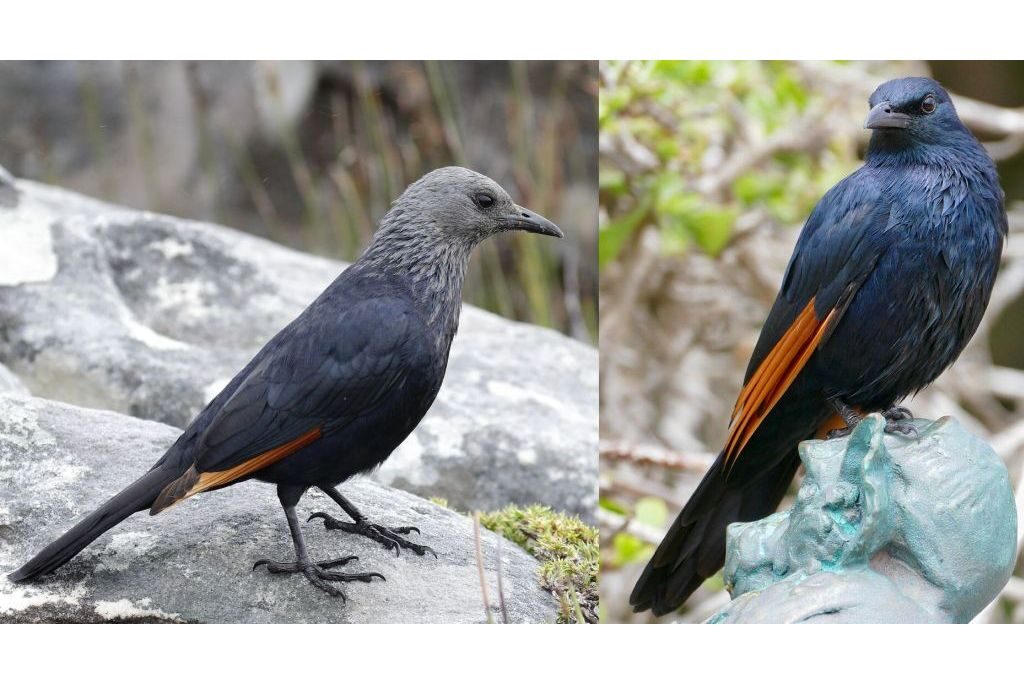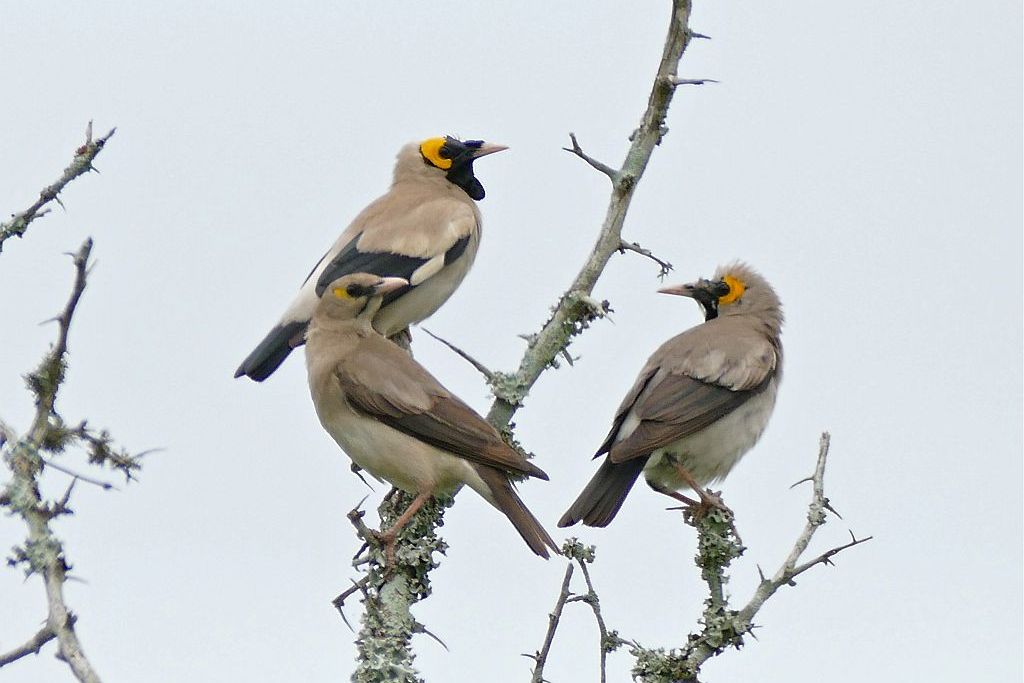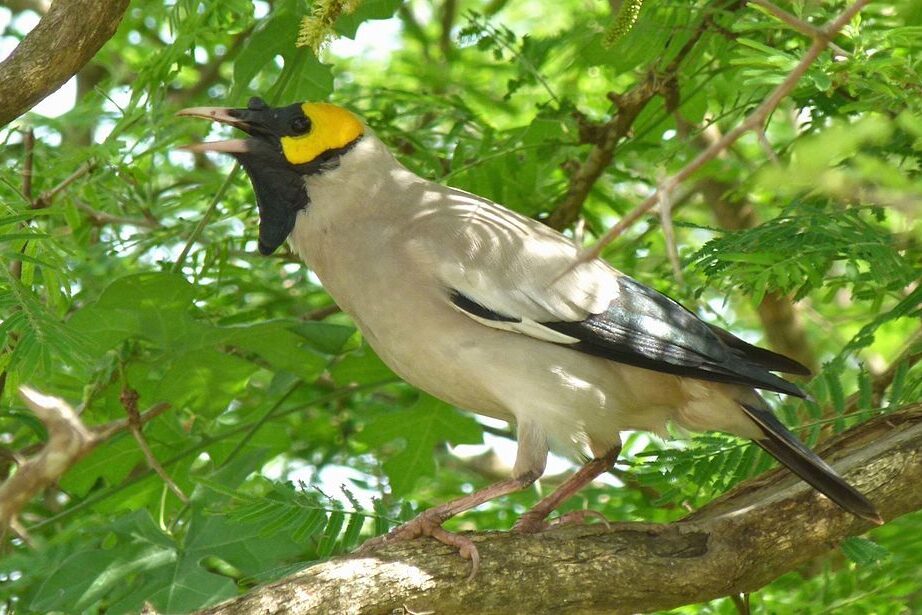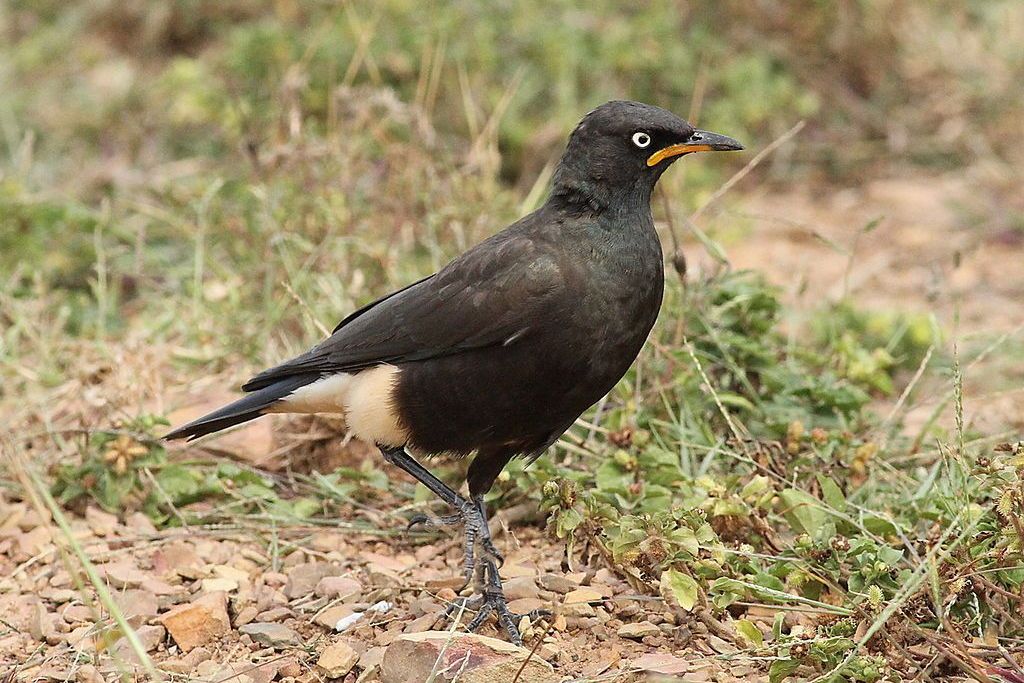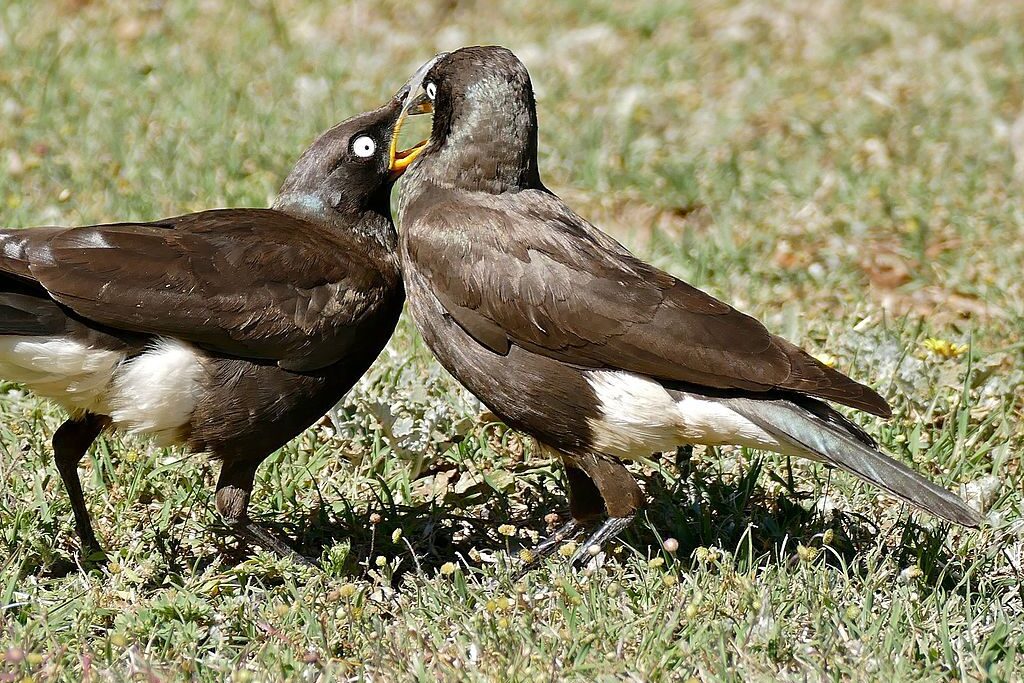29 January 2024: Day 11, Chobe National Park, Botswana — Road Scholar Southern Africa Birding Safari. Click here to see (generally) where I am today.
One of the visual treats for birders in southern Africa is a genus of iridescent birds known as glossy starlings (Lamprotornis). They make up only 18% of the starling family (Sturnidae) yet out-dazzle all the others from the mynas of Asia to the invasive common starling (Sturnus vulgaris) in North America.
The slideshow above shows eight species I expect to see in southern Africa, two slides per species in no special order. Five are glossy starlings (Lamprotornis genus) including the African pied starling which isn’t glossy. One is a monotypic genus that is glossy violet like a hummingbird. The red winged starling is shiny black. The wattled starling male grows black wattles on his face for the breeding season. Here’s the list with links to the details.
- Greater blue-eared starling (Lamprotornis chalybaeus), shimmering green
- Greater blue-eared starling (Lamprotornis chalybaeus), showing blue
- Violet-backed starling (Cinnyricinclus leucogaster), male
- Violet-backed starling (Cinnyricinclus leucogaster), male & female, quite dimorphic
- Cape starling (Lamprotornis nitens)
- Cape starling (Lamprotornis nitens) with nesting material
- Burchell’s starling (Lamprotornis australis), showing many colors
- Burchell’s starling (Lamprotornis australis), looking blue
- Meve’s starling (Lamprotornis mevesii)
- Meve’s starling (Lamprotornis mevesii)
- Red-winged starling (Onychognathus morio), female stretching her wing
- Red-winged starling (Onychognathus morio), female & male
- Wattled starlings (Creatophora cinerea), female & 2 males
- Wattled starling (Creatophora cinerea), male singing
- African pied starling (Lamprotornis bicolor) has a face like Angry Bird
- African pied starling (Lamprotornis bicolor), feeding young
In case you’re wondering why glossy starlings are so gorgeous, it’s because those with the best colors get the best mates. Read more about how quickly they evolve new colors in this vintage article:
p.s. We saw all the featured starlings in this article except for Burchell’s and the African pied starling.
